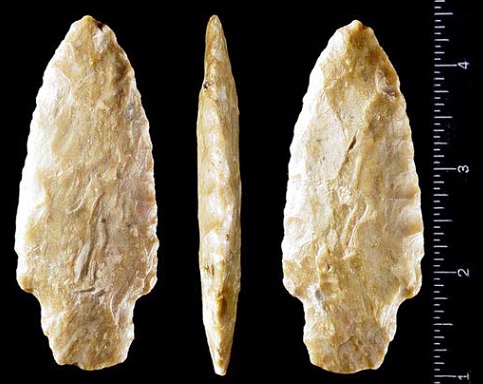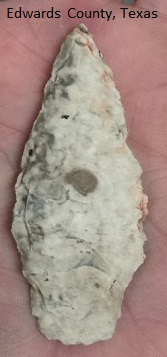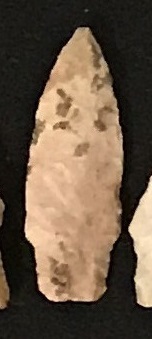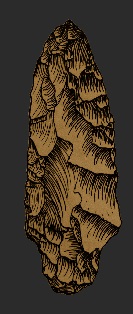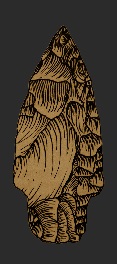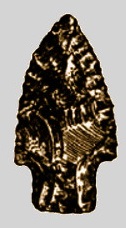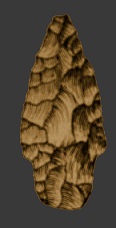Name Details:
Named By: Dee Ann Suhm, Alex D. Krieger, and Edward B. Jelks
Named For: Type Site
Date Identified: 1954
Type Site: Morhiss Mound (41VT1), Victoria County, Texas
Morhiss
AKA: Pogo
Garcetas Broad Base (Kelley 1947)
Cluster:
Commonly Utilized Material:
Date:
Cultural Period:
2,800 -2,000 B.P.
Late to Transitional Archaic
Neoglacial to Roman Warm
Glacial Period:
Culture:
Outline is Representative of Size and Shape:
Description of Physical Characteristics and Flaking Pattern:
This is a thick
medium to large (2.5 to 3 inches average) stemmed point with an elliptical cross section. The blade is primarily excurvate, but re-sharpened examples may have astraight to incurvate blade. The shoulders are commonly range from having an upward
angle to horizontal. The stem is broad and ranges from straight to
slightly contracting with basal edges that are rounded. The base
ranges from convex to straight and giving the stem a rounded appearance. This point has a random flaking pattern.
Size Measurements: Total Length - 41 to
90 mm (average 70 to 80 mm), Stem Length - 12 to 22 mm (typically
1/5 to 1/3 of total length), Width at shoulders - 25 to 40 mm,
Stem Width - 18 to 25 mm, Thickness - 4 to 10 mm (average 7 mm), (Suhm and Krieger, 1954).
Distribution:
Distribution Comments:
This point is primarily found on the
Guadalupe River of Texas and along the central coastal plains of Texas
and into eastern Louisiana, southwestern Arkansas, and southeastern
Oklahoma. Distribution extends into central Texas with decreased
frequency. This type has been reported in Tamaulipas and the
Teuhacan Valley in Mexico.
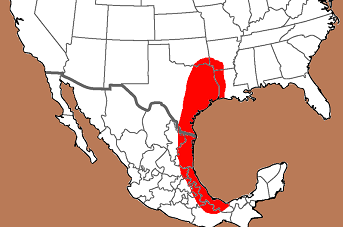
Related / Associated Points:
Pogo Additional Comments:
The name Pogo was used for large Morhiss points
(over 80mm). The Pogo type became a catchall for large stemmed points.
It fell out of use in the 80's and most of these points are now typed as
Morhiss points (except barbed examples which are typed as Gary / Dunn).
See Pogo for larger examples of (now
re-classified) Morhiss points.
A similar type described by J. Charles Kelly, the Garcetas Broad Base in
1947 could be included into this type.
Other points in this Cluster:
Pint Validity: Valid Type
Suhm was an eminent Texas anthropologist who, among many distinguished positions, served as Director of Texas Archeological Research Laboratory. Krieger was a renowned anthropologist who spent most of his career in Texas cataloging projectile points and pottery in Texas before moving on to the University of Washington. Jelks was a distinguished anthropologist and helped organize the newly formed Department of Anthropology at Illinois State University where he was a Professor. His
work in Texas furthered the understanding of Texas archeology and was a founding force for the Society of Historical Archeology. This type was named in a professional
publication and subsequent book and has many professional references. This is a valid type.
.
Age Details:
This point is part of the Aransas Focus and the Edwards Plateau Aspect.
References: (See Reference Page, Entry Number):
8, 23, 30, 44, 115, 177, 190
Morhiss Projectile Point, Morhiss Arrowhead

